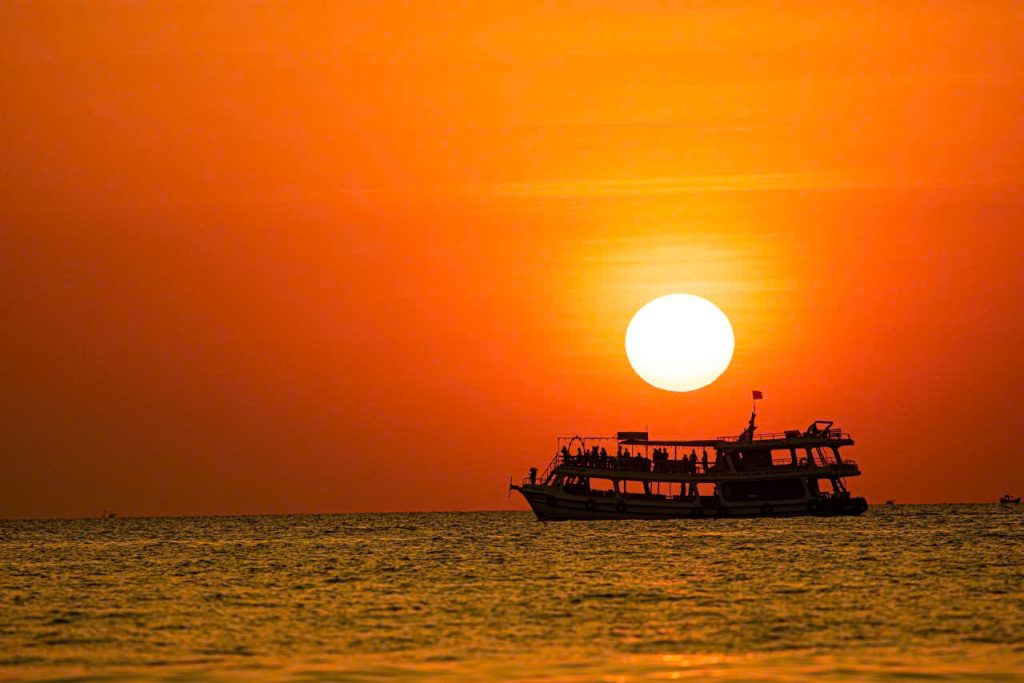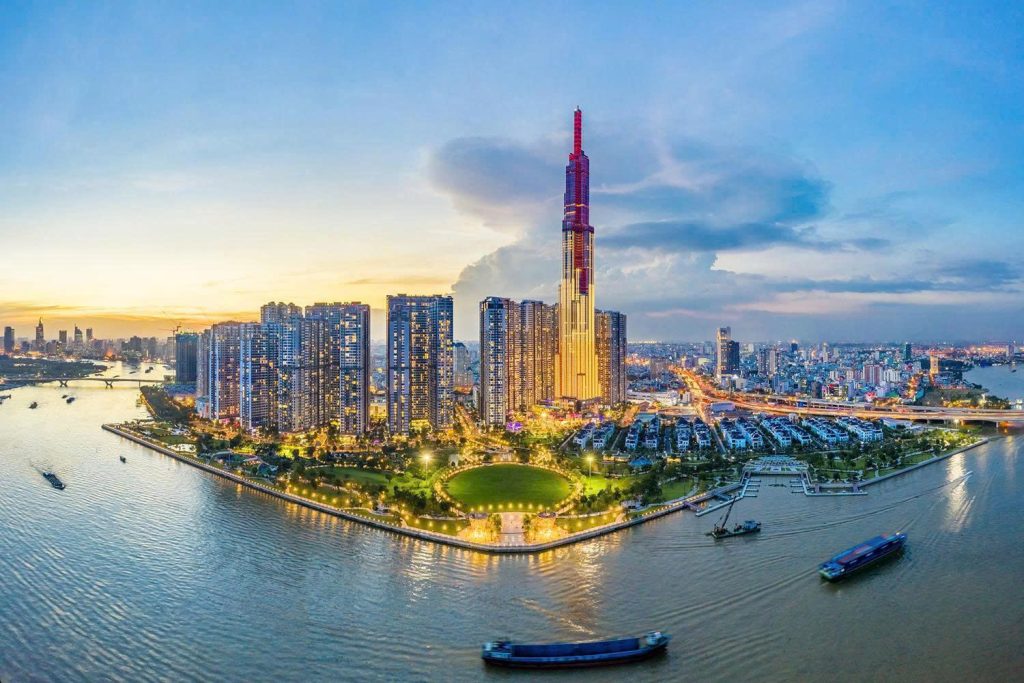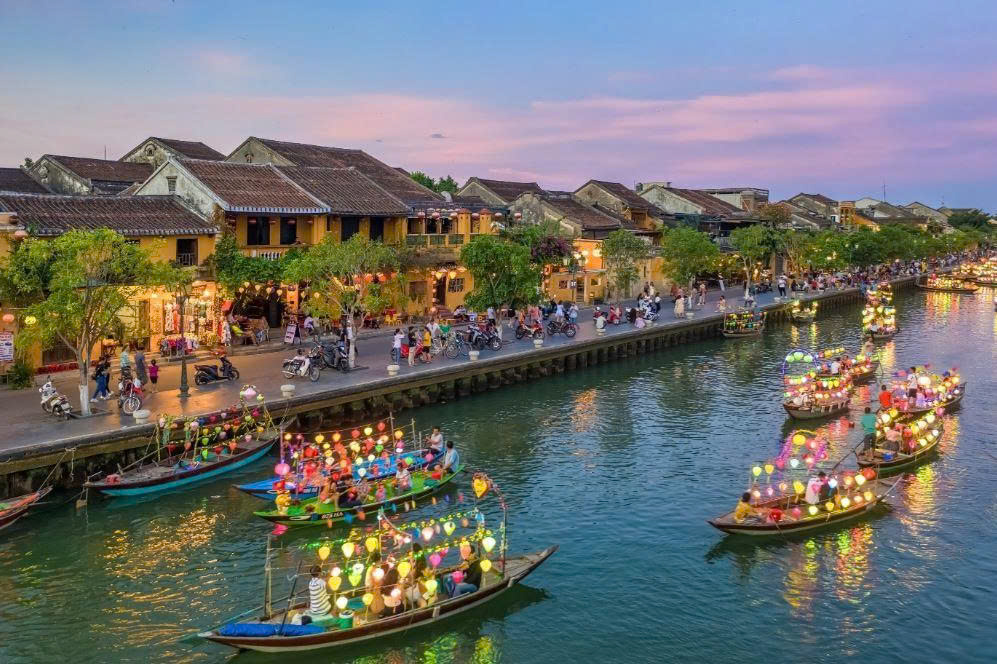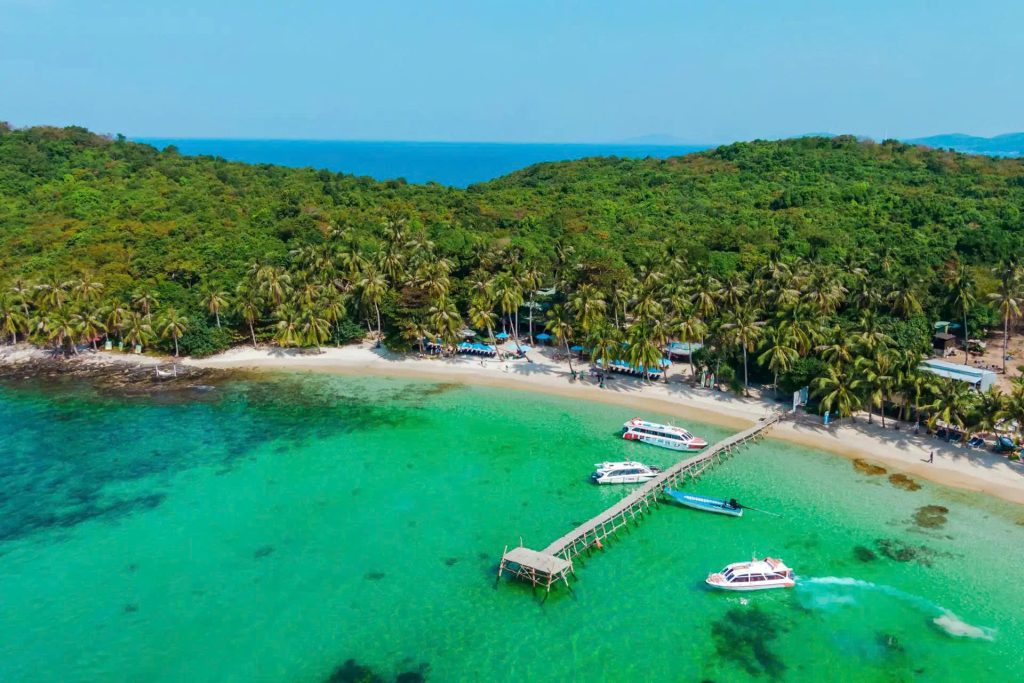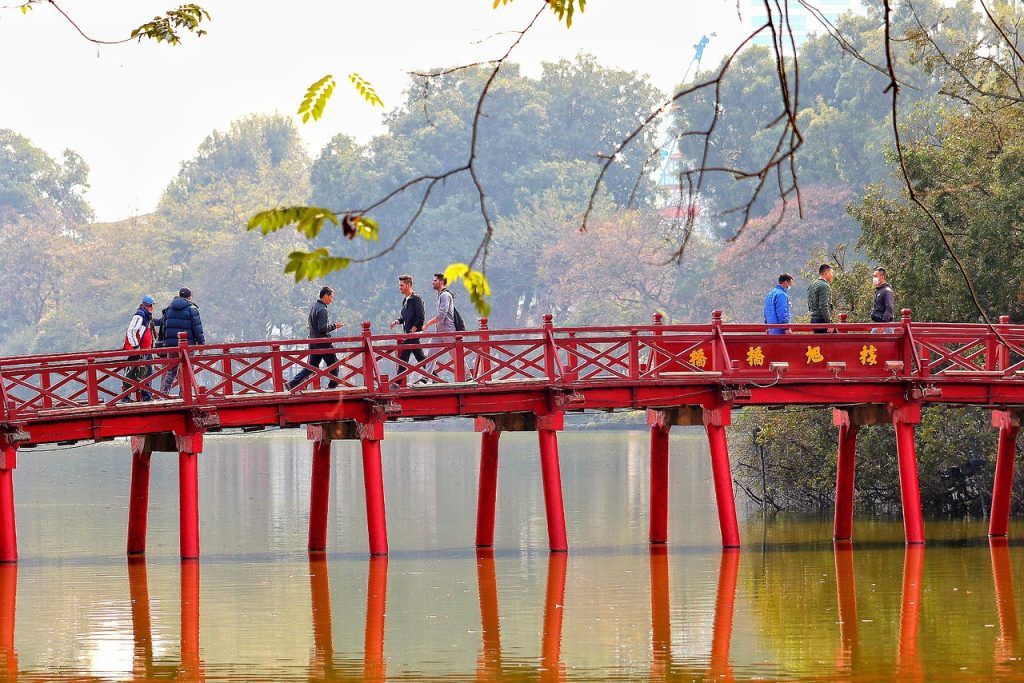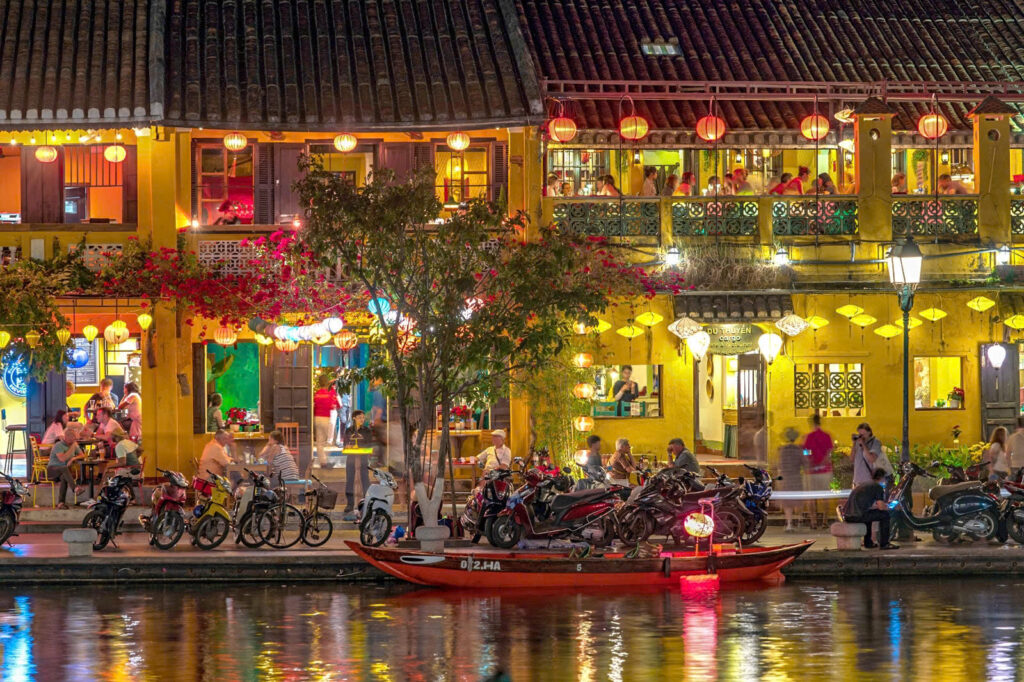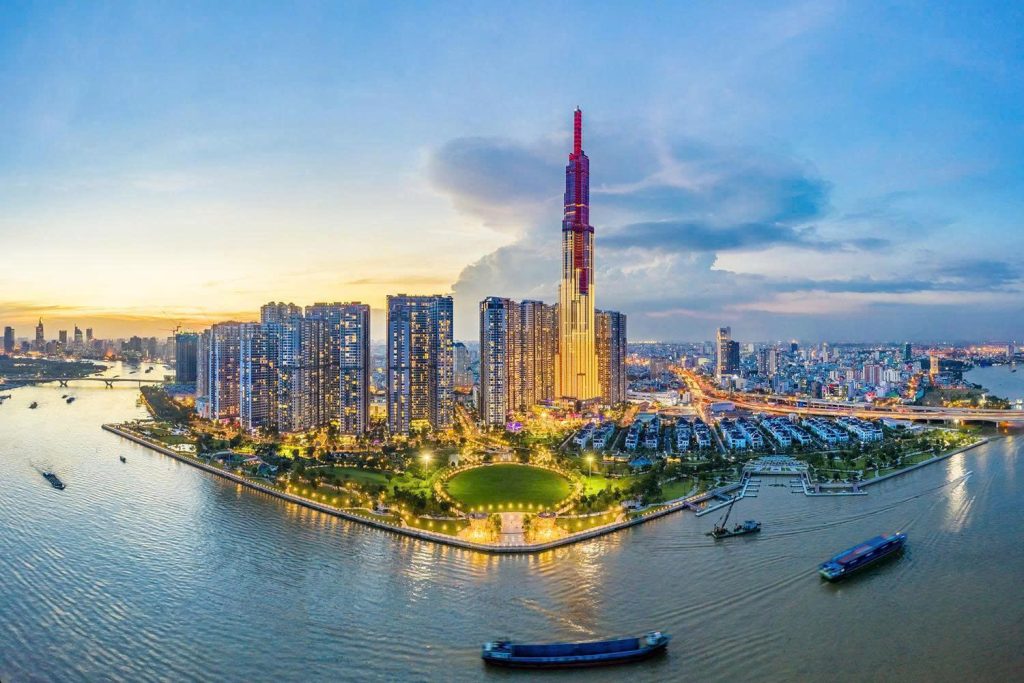Ha Long Bay is a stunning natural wonder in Vietnam, and knowing the best time to visit is key for experiencing its crystal-clear skies and serene beauty. Holding UNESCO World Heritage status, it serves as a foundational element of Vietnam’s tourism, showcasing an extraordinary natural phenomenon. However, to truly appreciate the dramatic beauty – the sheer scale of the karsts, the subtle shades of the water, and the distant horizon – timing your visit strategically becomes paramount. While the bay possesses a mystical charm even under cloudy skies, many visitors actively seek those postcard-perfect moments beneath clear, brilliant azure. Finding the best time to visit Ha Long Bay for clear skies requires understanding its distinct climate patterns and how they actively shape visibility throughout the year.
Ha Long Bay’s Climate

The climate in Ha Long Bay is tropical monsoon. This climate features four noticeable seasons, though people often simplify it into two main periods: a hot, wet summer and a cool, dry winter. The bay’s coastal location significantly influences its weather, bringing humidity and specific wind patterns. Understanding these patterns actively helps predict when clear skies are most likely to appear over the karst-filled waters.
Visibility in Ha Long Bay actively depends on several atmospheric factors. Rain showers, obviously, temporarily reduce visibility. Fog and mist, however, pose a more persistent challenge to clear views. Humidity levels actively contribute to haze, especially during warmer months. Wind conditions can sometimes help disperse fog or smog, improving clarity. Therefore, identifying periods with lower humidity, less fog, and minimal rainfall becomes crucial for securing those desired unobstructed views.
Seasonal Breakdown: How Weather Impacts Your View
Exploring Ha Long Bay season by season actively reveals how the weather typically behaves and what kind of sky conditions you can expect.
Spring (March – May)

Spring actively arrives in March, bringing a gradual warming trend after the cooler winter months. Early spring, particularly March and sometimes into April, frequently sees persistent mist or light fog settling over the bay. The karsts appear like ghostly figures emerging from the haze. You might struggle to see the full expanse of the bay or capture sharp images of distant islands.
From April into May, spring weather gets warmer and sees more rain. Humidity levels actively begin to rise. The likelihood of persistent mist decreases significantly, but occasional fog patches can still occur, especially in the early morning. Towards late May, the temperatures actively climb, and the risk of scattered rain showers increases as the climate transitions towards summer. Visibility generally improves compared to early spring mist, but increasing humidity can sometimes create a slight haze.
Summer (June – August): Heat, Rain, and Typhoon Risks

Summer actively takes hold from June to August, marking the hottest and wettest period in Ha Long Bay. High temperatures combine with soaring humidity levels, actively creating a distinctly tropical feel. Frequent afternoon rainstorms and showers are common. While usually brief and heavy, these rains cause a considerable temporary drop in visibility. However, between the rain events, the skies can clear up dramatically. You might experience moments of brilliant sunshine and excellent visibility immediately after a shower passes.
A major concern during the summer months actively involves the risk of typhoons and tropical storms. These weather events typically occur between June and November, with the highest risk falling in the summer (July to September). A typhoon actively brings heavy rain, strong winds, and severely limited visibility, often leading to cruise cancellations for safety reasons. While you might find pockets of clear weather in summer, the combination of heat haze, frequent rain, and typhoon risk makes it less reliable for consistently clear skies compared to other seasons.
Autumn (September – November): Often the Sweet Spot for Clarity

Autumn actively arrives in September and many travelers consider this season, particularly October and November, the most favorable period for visiting Ha Long Bay for clear skies. September still carries a residual risk of typhoons and sees some rainfall, but conditions generally improve as the month progresses.
October and November actively bring significantly drier and cooler weather compared to the humid summer. The temperatures stay agreeable, making them ideal for cruising and outdoor activities. Crucially, the likelihood of heavy rain diminishes greatly, and persistent fog is much less common than in winter or early spring. The air often feels clearer, and heat haze becomes less of an issue. These months consistently offer the highest probability of experiencing those sought-after clear blue skies and excellent long-distance visibility across the bay. You gain the ability to photograph stunning panoramic vistas and fully admire the complex details of the limestone karsts set against the still waters below.
Winter (December – February): Coolness and Potential for Persistent Mist

The winter season arrives in Ha Long Bay starting in December and continues until February. This season brings cooler temperatures, which can feel quite chilly, especially on the water and during windy days. Heavy rain doesn’t happen often, but the sky frequently turns overcast. Furthermore, persistent mist or light fog frequently covers the bay, especially during January and February. This misty veil creates a serene and atmospheric landscape, but it also significantly reduces visibility.
Prolonged periods of low clouds and fog during winter can completely obscure the iconic limestone karsts, making it difficult to see the famous views. While you might experience a few clear days, especially earlier in December, the later winter months actively carry a higher risk of encountering extensive misty conditions that limit photographic opportunities to capture photos and the bay’s full visual grandeur. The cooler temperatures also make activities like swimming less appealing and can require warmer clothing layers, even indoors on the cruise.
The Best Time for Your Visit
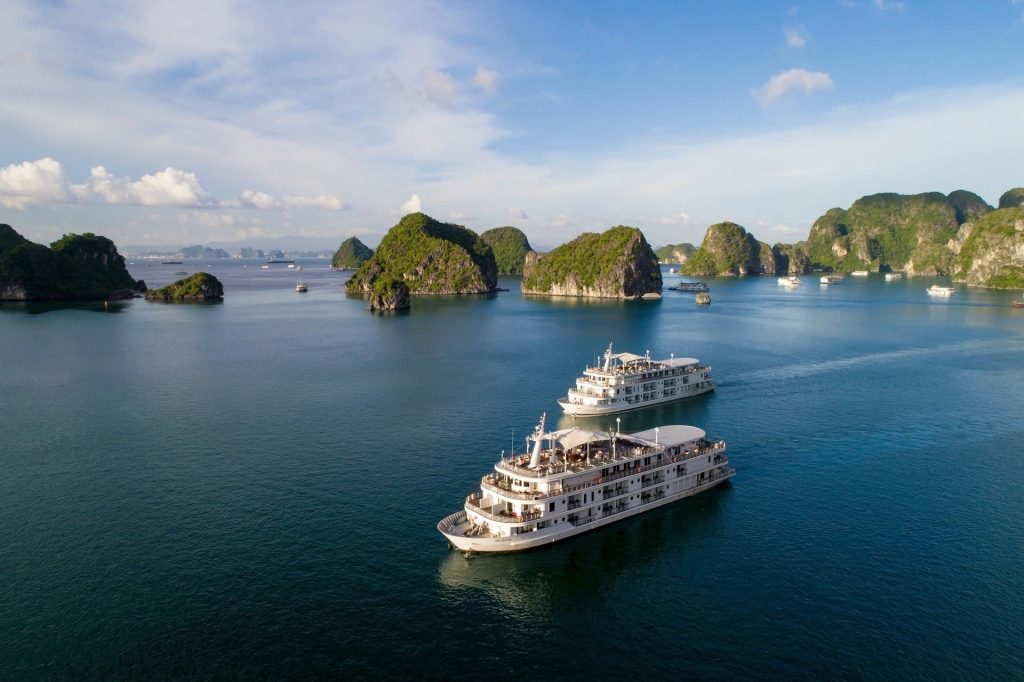
Based on the typical weather patterns, certain months actively stand out as offering the highest probability of experiencing clear skies in Ha Long Bay:
- October and November: These months consistently provide the best chance for clear, sunny weather. The typhoon season actively ends, humidity actively decreases, and fog actively remains uncommon. Temperatures are pleasant, making cruising very comfortable. This gives you the best opportunity to see stunning, unobstructed views.
- Late April and May: As spring transitions towards summer, the pervasive mist of early spring often dissipates. The weather warms up, and humidity has not yet reached its peak summer levels. While occasional rain showers can occur in May, late April and May often offer clearer skies before the intense heat and rain of summer arrive.
While these months actively offer the highest likelihood of clear skies, it’s important to remember that weather patterns can sometimes be unpredictable. However, planning your trip during these periods actively maximizes your chances for those stunning, high-visibility views.
Practical Tips for Chasing Clear Skies
Maximize your chances of experiencing Ha Long Bay under brilliant skies with these tips:
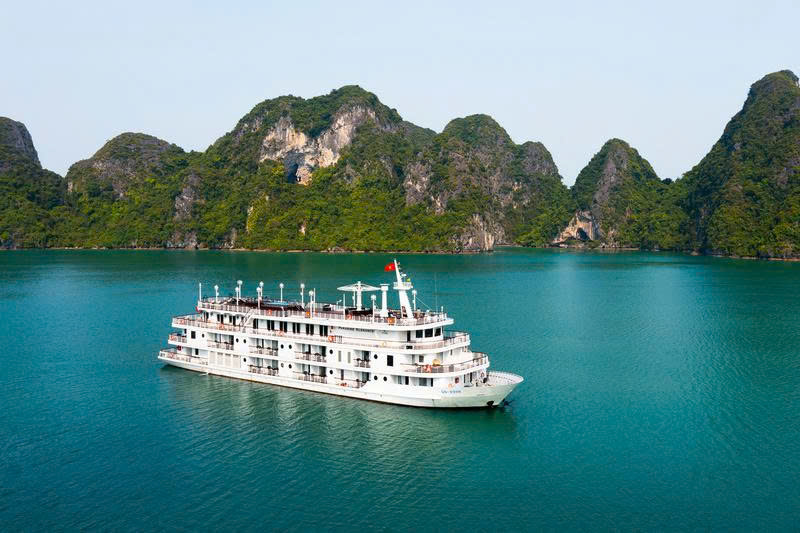
- Target the Peak Clarity Months: Actively schedule your trip for October or November, or consider late April and May, as these months statistically offer the clearest conditions.
- Monitor Weather Forecasts Closely: As your travel date approaches, actively check detailed weather forecasts specifically for Ha Long Bay. Weather patterns can change, and a last-minute check actively helps you prepare.
- Consider a Longer Stay: If your schedule allows, booking a 3-day/2-night cruise instead of a shorter one actively increases your probability of hitting at least one or two days with great visibility, even on days when conditions are less clear.
- Understand the Potential for Mist: Especially if visiting in the shoulder months or early spring/late autumn, realize that early morning mist can still occur. Often, this mist actively burns off as the day progresses, so patiently waiting actively pays off.
- Appreciate All Weather: While clear skies actively offer the most dramatic views, know that Ha Long Bay possesses a unique, mystical beauty when shrouded in mist. Be open to appreciating the landscape in different atmospheric conditions.
Beyond the Skies: Other Factors

While actively chasing clear skies, also consider other aspects that might influence your travel timing:
- Crowds: The best weather months (Oct-Nov, Apr-May) also often coincide with peak tourist seasons, meaning more visitors and potentially higher prices. The summer months see fewer international tourists due to rain and heat but can be busy with domestic travelers.
- Price: Peak season typically brings higher prices for cruises and accommodation. Traveling in the shoulder seasons (March, September) or the edge of the rainy season might offer better value, although you might compromise on sky clarity.
RELATED: Discover Ha Long Bay: Top Things to Do
For travelers who prioritize experiencing Ha Long Bay beneath clear blue skies and capturing those iconic, unobstructed views, the period from October to November consistently stands out as the most reliable time to visit. Late April and May also offer good potential for clear conditions before the onset of the summer heat and rain. While weather is never entirely predictable, actively planning your trip during these months actively gives you the best chance to witness the full, breathtaking splendor of Ha Long Bay under its clearest skies. Choose your timing wisely, and prepare for unforgettable vistas.



